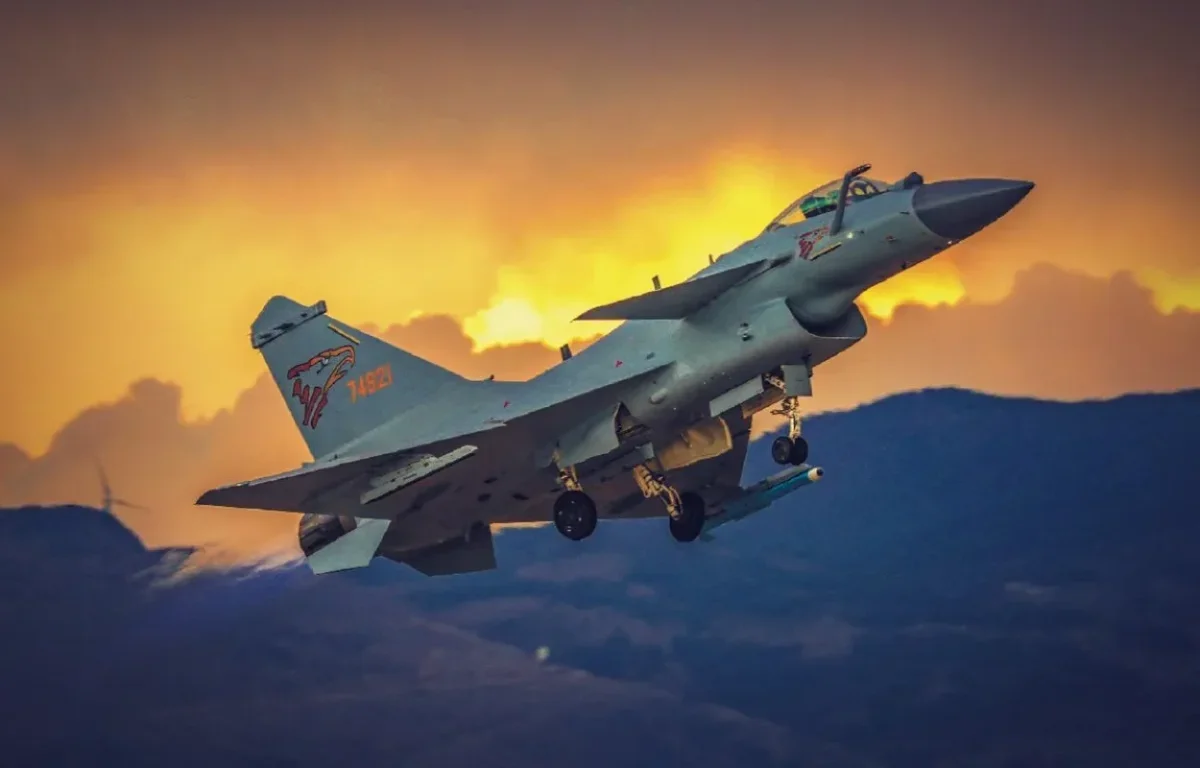The Dubai Airshow 2023 is one of the world's most renowned aviation events, serving as a platform for showcasing a wide array of commercial, business, and military aircraft.

Many experts highlight that the airshow will be a battleground for the most prominent fourth-generation fighters: the market favorite Dassault Rafale and the Chinese J-10C, aiming to capture the market.
China, targeting the Middle East market, is exhibiting seven of its J-10C fighters at the Dubai Airshow. All seven multi-role fighters from the People's Liberation Army Air Force's aerobatic team departed from an undisclosed airport in western China to Dubai's Al Maktoum International Airport on November 8.
This marks the first public demonstration of the J-10C in the Middle East since a significant overhaul in 2018. The aerobatic team will be showcasing at the airshow for the first time since 2017.
China aims to sell the fighter to Middle East clients as countries in the region seek to transition to military platforms not produced by the United States or Russia. For instance, Egypt has expressed interest in the J-10C as it looks to diversify its suppliers after the expected purchase of Russian Su-35 did not materialize. China's delivery timeline aligns with several other impending arms deals in the region.
Saudi Arabia is seeking to acquire unmanned aerial vehicles and air defense systems. Simultaneously, Algeria has reportedly purchased several Chinese corvettes, missiles, and drones. China is effectively attempting to replace the United States as the primary equipment supplier in the Middle East. Beijing's growing ties in the region and its willingness to supply weapons faster and with fewer restrictions than Washington have led to an 80% increase in arms sales in the Middle East.
This has benefited Beijing in recent years, given that relations between Middle Eastern countries and Washington have not always been smooth. Thus, for China, this presents an excellent opportunity to sell its most advanced fourth-generation fighter to potential clients.
The J-10 is a single-engine medium-weight jet fighter capable of operating in all weather conditions. It is China's first domestically produced jet fighter. In 2020, Pakistan became the first foreign buyer of the fighter.
On November 10, Dassault Aviation announced its participation in the airshow, where the static display will feature the Rafale C combat aircraft and the Rafale F4 simulator.
"Rafale will participate in a flying display every day, presented by the French Air and Space Forces, who operate a Rafale detachment based at Al Dhafra Air Base in the UAE," the company's statement noted.
The Rafale is a twin-engine fighter capable of taking off from conventional runways and aircraft carriers. Fully adaptable, the Rafale can perform all tasks of combat aviation, including air superiority and air defense, close air support, deep strikes, reconnaissance, anti-ship strikes, and nuclear deterrence.
With its advanced capabilities, this aircraft has somewhat dominated Middle East orders. Except for the Lockheed Martin F-35, no other Western aircraft has received more Rafale orders in the last two years.
One of the most significant contracts was signed with the United Arab Emirates (UAE), which had previously negotiated with Washington for the F-35 but managed to replace it with an order for 80 Rafales. Thanks to this purchase, the UAE could surpass the French Air Force as the largest Rafale operator. In addition to the UAE order, Qatar currently has 36 aircraft in service and may acquire another 36, while Egypt received 24 Rafales and ordered an additional 30.
The French manufacturer is actively seeking buyers for its Rafale. There are reports that both Saudi Arabia and Iraq have shown interest in the French aircraft. The latter stated that it will ultimately need between 100 and 200 new aircraft.
Countries in the Middle East traditionally procure military equipment from the United States or Russia. However, the war in Ukraine and supply chain issues have forced them to diversify their military imports. This is where French and Chinese defense manufacturers found an opportunity.
At the Paris Air Show in June this year, Dassault Aviation CEO Eric Trappier warned journalists that Russia's invasion of Ukraine in February 2022 could tilt the scales in favor of his company's fighters.
"Some countries no longer want to buy Russian planes but also don't want American ones. Thus, France may be traditionally a slightly more neutral country," he said.